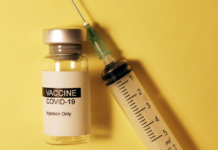Data analyzed by a think tank found the number of Canadian patients who died while awaiting surgery has increased by 49% year-over year.
The analysis was presented by SecondStreet.org, a research group launched in 2019 to focus on the effects of government policies have on Canadians’ everyday life.
Analysts found that in the fiscal year from April 1, 2022 to March 31, 2023, 2,096 patients died while awaiting surgery – in the previous fiscal year that number was 1,417 patients.
The research group has been gathering data on waiting list deaths nationwide since 2020. SecondStreet.org recently challenged Ontario Health to make more of their data regarding the issue available and won their case through Ontario’s Information Commissioner.
“Some will blame this on COVID, but health care in Ontario was in a crisis situation long before COVID. We’re seeing some positive health reform in the province, but there’s more work to do.” said Colin Craig, president of SecondStreet.org.
Data from the same year-over-year comparison also revealed that deaths of those waiting for a diagnostic scan (MRI/CT) have also risen by 27% and cardiac surgical wait list deaths are up by 17%.
“Government data shows that despite spending more and more money, there has been a steady increase in waiting list deaths in Ontario over the past seven years,” said Craig.
For example, Ontario spent an average of $4,057 per patient on healthcare in 2015/2016 and by 2022-23 the province spent $5,400 per patient, according to data from Canadian Institute for Health Information (CIHI). That is an increase of about 8% higher than the rate of inflation.
The CIHI also noted that Canada spends, “among the highest internationally” on healthcare compared to other OECD countries like France and Germany.
“The Ontario government’s decision to partner with private clinics is a positive step that could help address this problem,” said Craig.
“When Saskatchewan partnered with private clinics, their wait times went down substantially. Ontario could also let patients choose between using the public system or paying for health care at non-profit and private clinics. That would take pressure off the public system and would save patients from having to drive to Quebec or the United States for timely treatment,” he added.





















